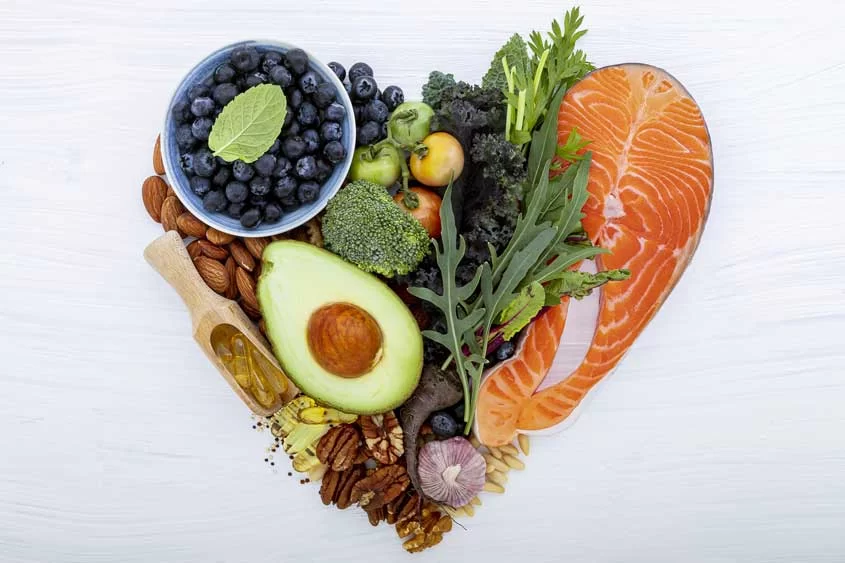Why I Started Eating for My Heart
Three years ago, I was sitting in a doctor’s office, staring blankly at my lab results. My cholesterol levels were through the roof, my blood pressure hovered on the edge of danger, and I was only 39. It didn’t make sense to me—I wasn’t overweight, I exercised sometimes, and I didn't smoke. But what I hadn’t realized was that my typical American diet was slowly clogging my arteries and putting me at serious risk for heart disease.
That wake-up call changed my life. I dove into research, consulted with a nutritionist, and made small, sustainable changes to the way I ate. What I found along the way wasn’t just life-saving—it was empowering. This article is for you, whether you’ve had your own health scare or you’re just trying to live better. I want to share what I’ve learned about the importance of heart-healthy foods in preventing disease—and how delicious it can be.

Understanding the Link Between Diet and Heart Health
Heart disease is the leading cause of death in the United States. According to the CDC, one person dies every 33 seconds in the U.S. from cardiovascular disease. The good news? A significant number of those deaths are preventable with lifestyle changes, especially diet.
Atlanta Heart Specialists
atlanta heart specialists
4375 Johns Creek Pkwy #350, Suwanee, GA 30024, USA

1. The Science Behind Heart-Healthy Foods
Heart-healthy foods aren't just a buzzword; they're supported by decades of nutritional science. Foods rich in omega-3 fatty acids, fiber, antioxidants, and unsaturated fats can lower bad cholesterol (LDL), raise good cholesterol (HDL), reduce blood pressure, and improve the function of blood vessels.
Examples include:
- Fatty fish like salmon, sardines, and mackerel
- Leafy greens such as kale, spinach, and arugula
- Whole grains like oats, brown rice, and quinoa
- Legumes including beans, lentils, and chickpeas
- Healthy fats from avocados, nuts, and olive oil
2. The Hidden Dangers in the Standard American Diet (SAD)
Before my lifestyle change, my diet looked like many others in the U.S.—high in red meats, processed foods, refined sugars, and sodium-packed snacks. These foods, especially in combination, create a dangerous storm of inflammation and plaque buildup in the arteries, leading directly to heart issues.
Fast food, frozen meals, soda, and even those so-called “healthy” granola bars loaded with sugar all contribute. Once I recognized these patterns, I realized I needed to be more intentional about everything I put into my body.
Small Changes That Made a Big Difference
Going heart-healthy doesn’t mean giving up taste or your favorite dishes—it means learning to modify and substitute ingredients with better options. I started slow, and here’s what worked for me.
1. Replacing, Not Restricting
I swapped out white rice for quinoa, started using olive oil instead of butter, and made veggie-packed soups instead of cream-based ones. I even began making my own salad dressings to control sodium and sugar. Over time, my taste buds adapted, and I began craving healthier meals.
2. Eating With Purpose
I stopped eating in front of the TV or rushing through meals. I focused on colorful plates—greens, oranges, purples. It wasn’t just about nourishment anymore; it became a form of self-care. Food started to heal me from the inside out.
3. Getting My Family on Board
Changing my diet also inspired my family to follow suit. We cook together more, try new ingredients, and talk about food in a positive way. My kids now know the difference between "sometimes" snacks and "everyday" foods, and they love choosing their favorite fruits at the farmer’s market.
Stories From My Circle: Real Lives, Real Change
My cousin Mike used to suffer from hypertension, always blaming it on “family genes.” But after cutting out processed meats, cooking with garlic and turmeric, and incorporating more leafy greens, he dropped 15 pounds and brought his blood pressure to a healthy range—all without medication. Another friend, Claire, reversed her prediabetes diagnosis by adopting a plant-based diet and walking daily. These stories aren’t rare—they’re becoming more common, and they all started with simple dietary changes.
Making Heart-Healthy Eating Practical for You
Switching to a heart-healthy lifestyle isn’t just for those with a health scare—it’s for anyone who wants to live longer, feel better, and have more energy. If you're not sure where to start, consider these practical steps:
1. Meal Planning and Preparation
I started meal prepping on Sundays. It helped me control ingredients and saved time during busy weeks. I batch-cooked soups, pre-chopped veggies, and prepped healthy snacks like hummus and fruit slices.
2. Reading Labels
One of the biggest eye-openers for me was learning to read food labels. I now avoid anything with trans fats, high sodium, and added sugars. Even foods marketed as “healthy” can be misleading, so I always check ingredients first.
3. Getting Support
I joined an online heart health group where members share recipes, motivation, and success stories. Surrounding yourself with a community that shares your values can make the transition easier and more enjoyable.
Living With Heart: A New Way to Experience Food
Eating heart-healthy foods has become more than a way to prevent disease—it's a joyful, intentional way to live. I've discovered new flavors, cultures, and habits I never would’ve tried otherwise. And most importantly, I feel good—physically, mentally, and emotionally. If you're on the fence, I encourage you to take that first small step. Your heart will thank you.
For personalized guidance, recipes, and resources tailored to your health goals, check out our services at HeartCare Hub. We're here to help you live well, one bite at a time.






















Deborah Heart and Lung Center
deborah heart and lung center
200 Trenton Rd, Browns Mills, NJ 08015, USA